

© Shipping Wonders of the World 2012-

Japanese Shipping
The remarkable growth of the Japanese Mercantile Marine in the nineteenth and twentieth centuries was caused by a number of economic circumstances that did not affect other maritime nations. Japanese cargo and passenger vessels, although not of the largest, are highly efficient
SEA TRANSPORT OF THE NATIONS -
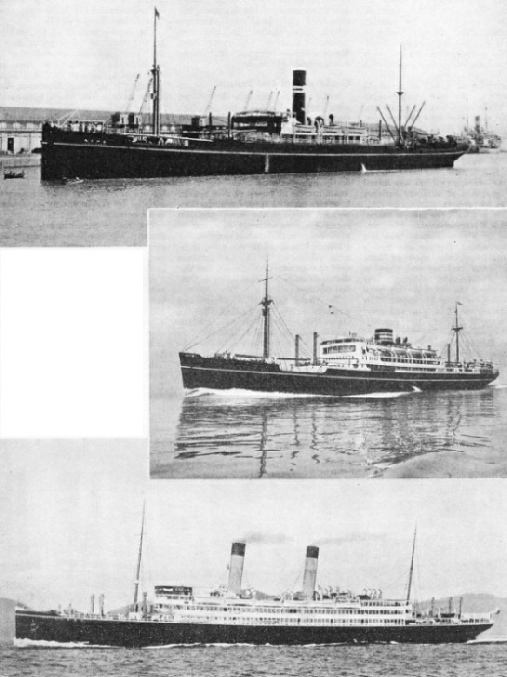
A JAPANESE-
8 in long. She has a beam of 49 ft 6 in and a depth of 29 ft 11 in. She was built in 1910.
MODERN MOTOR LINER launched in May 1930 for the Nippon Yusen Kaisha’s London-
AN EARLY JAPANESE LINER built in 1908 for the Toyo Kisen Kaisha. The Tenyo Maru had a gross tonnage of 13,469. She was 558 feet long, with a beam of 61 ft 10 in and a depth of 35 ft 6 in.
DATING in its modem form only from the ‘sixties of last century, the Japanese Mercantile Marine may reasonably claim to be the newest in the world. The tonnage of its powered ships, originally all steam-
By the seventeenth century the Japanese were already receptive to European ideas. The famous Will Adams (c. 1575-
In the ‘fifties the policy of isolation was violently broken by the arrival of the foreigners, first the Americans and then the other nations one after the other. The Japanese immediately realized that their open-
The first buyers of steamships in Japan were the daimio, but it proved impossible to combine the dignity of a prince with the position of a business man, who was of little repute in Japan. The first steamship service was inaugurated in 1870, but the princes and the central Government soon began to appreciate the necessity of handing the ships over to private enterprise.
Thus Japanese shipping began with the initial advantage of having its tonnage provided by the authorities and it was soon to benefit by the country’s need of tonnage for its various wars. The wars started with the expedition to Formosa in 1875. Then came the war with China in 1894-
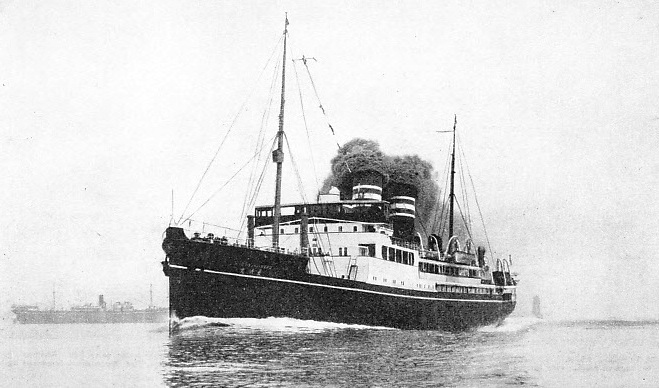
Express Services between Japan and China are maintained by the Nippon Yusen Kaisha. The Nagasaki Maru, a vessel of 5,268 tons gross, is employed on this route. She was built in 1922 by Denny Brothers at Dumbarton. She has a length of 395 feet, a beam of 54 ft 3 in and a depth of 29 feet. Four steam turbines drive her twin screws through single-
When a modern shipping industry grows up in this abnormal fashion it is only natural that its character should be abnormal. Under the Japanese flag the distribution of ownership is striking. There are a few big ship-
The two most famous of the biff concerns are known all over the world, the Osaka Shosen Kaisha and the Nippon Yusen Kaisha The Osaka Shosen Kaisha was intended to look after the minor services from Osaka, and when it was formed there were nearly a hundred owners in the port. Most of them owned only one primitive little steamer engaged in services round the coast and across the Inland Sea.
The Nippon Yuseu Kaisha was formed by the union of the Mitsu Bishi Company, one of the first big private enterprises in Japan, with other concerns that had been started or encouraged by the State. Nowadays the Osaka Shosen Kaisha is interested mainly in big cargo liners that have passenger accommodation. The Nippon Yuseu Kaisha maintains numerous passenger services in luxury liners.
Dependence on Sea Power
There are still an enormous number of small ship-
Remarkable as has been the ability shown by Japanese shipowners, it would have been physically impossible for them to have attained their present position in such a short time had it not been for the fact that the Government, early recognizing that Japan can expand and even exist only by sea power, has given every form of State assistance for many years past. The population has been expanding with extraordinary rapidity and large quantities of foodstuffs, formerly rice but now largely wheat, have to be imported, in addition to the raw materials for the country’s manufactures. So the Japanese regard their merchant fleet as being as important to the country as the Navy, and are willing to spend money on it.
State aid in Japan began with the transfer of Government tonnage to the new companies on advantageous terms, often with a present of capital to run them. When the Nippon Yusen Kaisha was formed in 1885 the Government guaranteed its shareholders eight per cent on their money for fifteen years, and the promoters had no difficulty in raising the necessary capital. The Osaka Shosen Kaisha was paid generously for the carriage of mails, passengers and cargo among the various Japanese islands. This business was extremely important when road communications were so bad and railways were non-
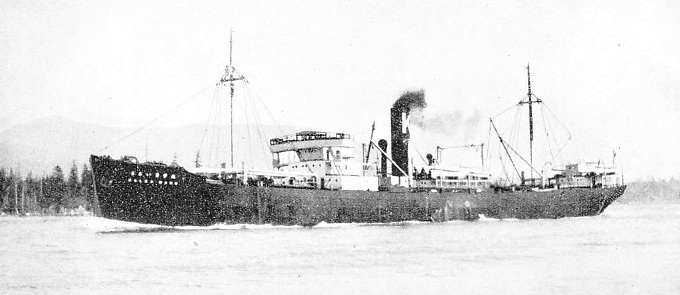
A typical Japanese cargo vessel of 1921, the Wales Maru was built at Kobe by the Kawasaki Dockyard Company Ltd. She has a gross tonnage of 6,586. Her length between perpendiculars is 405 feet, her beam 53 feet and her depth 37 feet. The Wales Maru is owned by the Kawasaki Kisen Kaisha and is registered at Kobe.
The war with China not only gave the Japanese confidence in themselves, but it also made the whole country, including even the illiterate coolies, turn its thoughts towards the sea. It gave the Government the opportunity, in 1896, of launching a big scheme of shipping subsidies modelled on the French and Italian schemes. It aimed at getting the Merchant Service more ships of reasonable size and speed. Bounties, therefore, were given of so much per gross ton for every thousand miles steamed by ships of at least 1,000 tons gross, with a speed of 10 knots or more. The rate of the subsidy increased steadily with the size and speed of the vessels concerned. Foreign-
The effect of this subsidy law was immediate. Even for the local services, owners aimed at being above the 1,000 tons, 10-
The Nippon Yusen Kaisha extended its service to Europe and built for this purpose twelve twin-
State Control
Never had a shipping nation been known to rise so rapidly, but the Japanese made a careful study of sea power and its meaning and acted with great foresight. The running of ships was only one side of the question. The Navy had to be increased for their protection. For this purpose the shipbuilding industry was encouraged to expand alongside the shipping. Shipbuilders were handicapped by the lack of shipbuilding steel in the country, and the cost of importing it was an offset against the advantages of cheap but excellent labour.
For many years the Japanese Navy was content to get its ships from foreign yards, principally from Great Britain, but some from America, France and Germany, while the shipbuilding industry was gaining experience with merchantmen. Then men-
Even so, the whole of the Japanese shipping and shipbuilding services were not founded on these State aids alone. Numbers of firms have shown the greatest individuality in working out their own salvation with considerable success In addition to the ships built in Japanese yards with State assistance, many were bought from European owners, some of them long after they had passed their first youth. They were ran on the tramping services for some years before they went to the scrappers, and their material was carefully worked up into new ship plates.
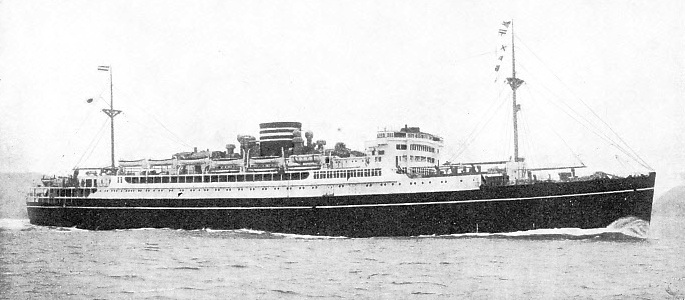
On the Orient and California service the Nippon Yusen Kaisha employ the Chichibu Maru, a motor passenger liner of 17,498 tons gross. She was built In 1930 at Yokohama. She has length of 560 feet, a beam of 74 feet and a depth of 42 ft 6 in. The Chichibu Maru has a cruiser stern, and below her main strength deck are three others, with a fourth deck in Nos. 1, 2 and 3 Holds.
The Japanese are extraordinarily clever at patching up ships, so that many of these foreign-
Although Japan was an active party in the war of 1914-
Great Britain and the United States were having to make a colossal effort because of the German submarine blockade, and even their facilities were hopelessly overtaxed. So Japan entered into an agreement with the United States (on behalf of the other Allies) to build a large number of standardized cargo ships for the US Shipping Board. For her part, America sent Japan large quantities of the shipbuilding steel that she needed. This arrangement gave rise to many amusing incidents. Bunks designed for Japanese 5 ft
6-
The condition of the Japanese Merchant Service now differs greatly from that before 1914. There are still a number of tramps, but the proportion is far smaller than before 1914 and the majority of the cargo ships run on regular berth. The standard of these vessels is much higher than before and would be a credit to any flag. The control that the State maintains over the personnel – every Japanese seaman is a Naval Reservist – brings and keeps the men up to the same standard as the material.
Fast Motor Ships
Another change in Japanese shipping, nearly as striking as the changeover from tramp to liner, has been the way in which the diesel engine has been adopted.
Although Japanese coal was not the best in the world, it was suitable for ships’ bunkers, and was so cheap that it gave their steamers a considerable advantage. Yet nearly all the new merchant ships that have been built, both large and small, in Japan have been diesel-
Japan was the first big maritime Power to be able to declare that it had not a single ship laid up for lack of employment. All the large shipowning companies and many of the smaller ones have modern fleets that can be run with remarkable economy and efficiency. The Japanese Navy has a large supply of ships available for auxiliary purposes whenever they are wanted.
Some of the fastest motor cargo liners in the world are under the Japanese flag, and are specially designed for the carriage of silk across the Pacific.
Japanese motor passenger liners are so cleverly designed with the usual Japanese economy in space that they compare favourably with many much larger ships under foreign flags. For economic reasons, other countries cannot see their way to building tankers with a higher speed than 13 knots, but the Japanese tanker owners, with the help of the Navy, have built them with trial speeds of up to 20 knots.
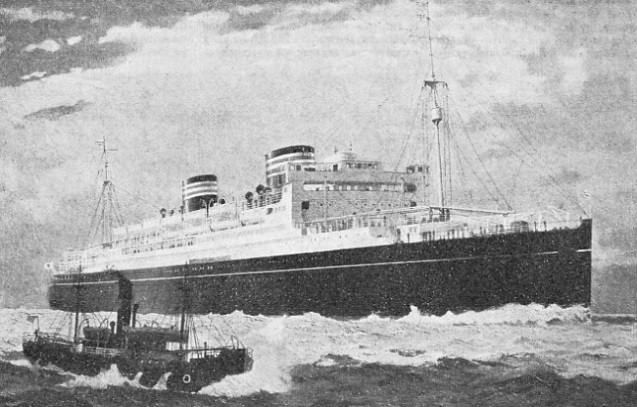
The imposing appearance of the modern Japanese liners is shown in this illustration of the Asama Maru. A Nippon Yusen Kaisha liner of 16,975 tons gross, she is 560 feet long, with a beam of 72 feet and a depth of 42 ft 6 in. She was built in 1929 and is propelled by four screws. Her sister ship, the Tatsuta Maru, is of similar appearance; the Chicubu Maru, while practically a sister ship, looks very different.
You can read more on “The Hyogo Maru”, “The Imperial Japanese Navy” and “The Kurenai Maru” on this website.